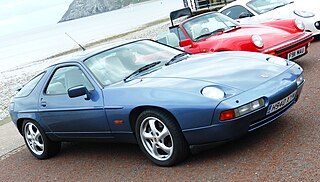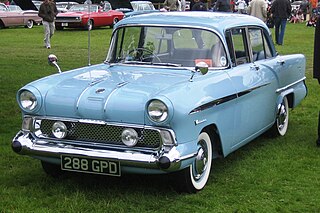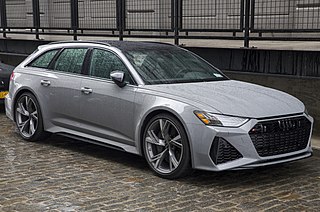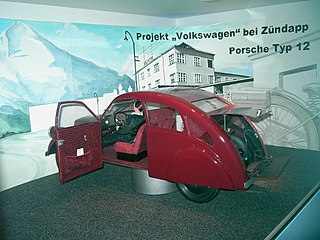
The Porsche 928 is a grand touring car with a 2+2 seating layout manufactured by Porsche AG of Germany from 1978 to 1995. Initially conceived to address changes in the automotive market, it represented Porsche's first fully in-house design for a production vehicle and was intended to potentially replace the Porsche 911 as the company's flagship model. The 928 aimed to blend the performance and handling characteristics of a sports car with the comfort, spaciousness, and ride quality of a luxury car. Porsche executives believed that the 928 would have broader appeal compared to the compact, somewhat outdated, and slow-selling air-cooled 911. Notably, it was Porsche's inaugural production model powered by a V8 engine located at the front, and it achieved remarkable top speeds, earning recognition upon its 1978 release by winning the European Car of the Year award. The Autocar described it as a "super car" in 1980.

The Lotus Europa name is used on two distinct mid-engine GT cars built by British automobile manufacturer Lotus Cars. The original Europa and its variants comprise the Lotus Types 46, 47, 54, 65 and 74, and were produced between 1966 and 1975.

The Audi A6 is an executive car made by the German company Audi since 1994. Now in its fifth generation, the successor to the Audi 100 is manufactured in Neckarsulm, Germany, and is available in saloon and estate configurations, the latter marketed by Audi as the Avant. Audi's internal numbering treats the A6 as a continuation of the Audi 100 lineage, with the initial A6 designated as a member of the C4-series, followed by the C5, C6, C7, and the C8. The related Audi A7 is essentially a Sportback (liftback) version of the C7-series and C8-series A6 but is marketed under its own separate identity and model designation.

The Opel Rekord is a large family car which was built in eight generations by the German car manufacturer Opel. Between 1953 and 1986, approximately ten million were sold.

A multi-valve or multivalve engine is one where each cylinder has more than two valves. A multi-valve engine has better breathing, and with more smaller valves may be able to operate at higher revolutions per minute (RPM) than a two-valve engine, delivering more power.

Delage is a French luxury automobile and racecar company founded in 1905 by Louis Delâge in Levallois-Perret near Paris; it was acquired by Delahaye in 1935 and ceased operation in 1953.

The Vauxhall Victor is a large family car produced by Vauxhall from 1957 until 1976. The Victor was introduced to replace the outgoing Wyvern model. It was renamed Vauxhall VX Series in 1976 and continued in production until 1978, by which time it had grown significantly and was viewed, at least in its home market, as a larger-than-average family car.

The Audi S4 is the high performance variant of Audi's compact executive car A4. The original Audi S4, built from 1991 until 1994, was a performance-oriented version of Audi's 100 saloon/sedan. All subsequent S4s since 1997 have been based on the Audi A4; and as the A4 has evolved from one generation to the next, so has the S4.

The Audi RS 6 is a high-performance variant of the Audi A6 range, produced by the high-performance subsidiary company Audi Sport GmbH, for its parent company Audi AG, a subsidiary of the Volkswagen Group, from 2002 onwards.

The Wolseley 4/50 and similar 6/80 were Wolseley Motors' first post-war automobiles. They were put into production in 1948 and were based on the Morris Oxford MO and the Morris Six MS respectively. The 4-cylinder 4/50 used a 1476 cc 50 hp version of the 6/80 engine, while the 6/80 used a 2215 cc 72 hp straight-6 single overhead cam.

The Audi RS 4 is the high-performance variant of the Audi A4 range produced by Audi Sport GmbH for AUDI AG, a division of the Volkswagen Group. It sits above the Audi S4 as the fastest, most sports-focused car based on the A4's "B" automobile platform. The RS 4 was reintroduced in 2012, based on the A4 Avant instead of the sedan as did the original model.

The Audi S6 is the performance variant of the Audi A6, an executive car produced by German automaker Audi. It went on sale in 1994, shortly after the "A6" designation was introduced, replacing the "100" nameplate.

The ALFA 40/60 HP is a road car and race car made by Italian car manufacturer ALFA. This model was made between 1913 and 1922 and was designed by Giuseppe Merosi, as were all other Alfas at that time. The 40/60 HP has a 6082 cc straight-four engine with overhead valves, which produced 70 PS (51 kW) and its top speed was 125 km/h (78 mph). The 40-60 HP Corsa racing version had 73 PS (54 kW) and a top speed of 137 km/h (85 mph), and it also won its own category in the Parma-Berceto race.
The Rolls-Royce 20 hp was one of four car models to be produced as a result of an agreement of 23 December 1904 between Charles Rolls and Henry Royce. Badged as a Rolls-Royce, the 20 hp was produced during 1905 and 1906 by Royce's company, Royce Ltd. at its factory in Cooke Street, Hulme, Manchester. It was sold exclusively by Rolls' motor dealership, C.S.Rolls & Co., at a price of GBP650. The 20 hp was exhibited at the Paris Salon in December 1904, along with the 10 hp, 15 hp and engine for the 30 hp models.

The Mercedes-Benz W10 was a touring car produced by Mercedes-Benz from 1929 to 1934, replacing the W03/Typ 350 models. The structure originated by Ferdinand Porsche was modified by Hans Nibel.

The Tatra 30 is an automobile formerly made by the Czech manufacturer Tatra. It was manufactured between 1926 and 1928. From 1928 to 1931 the car was fitted with a newer engine and is therefore called the Tatra 30/52.

The Tatra 70 is a Czechoslovak luxury car that was made by Tatra at Kopřivnice from 1931 to 1937. It succeeded the Tatra 31.

The Präsident was an automobile manufactured by the Nesselsdorfer Wagenbau-Fabriks-Gesellschaft, since 1919 Tatra, in 1897. It was the first practical, factory-produced petrol engine automobile built in Central and Eastern Europe. It was constructed by Leopold Sviták and Hans Ledwinka. The automobile was more of a carriage without horses than a car in modern sense. The car is steered via handlebars. The wooden bodywork is placed on an iron frame. It has four seats and a convertible top that would cover only the rear seats. Both axles have suspension of semi-elliptical leaf springs. The wheels were similar to the ones of a horse carriage, but had rubber tyres. The car had a two cylinder spark ignition Benz engine placed by the rear axle.

The Porsche Type 12 was a German project to develop an "Everyman's automobile" for Zündapp. Fritz Neumeyer, then owner of Zündapp, ordered Ferdinand Porsche to design and build the prototype in 1931. Eventually, two saloons, and one drophead coupé were built. All of those cars were lost during World War II, the last one in a bombing raid in Stuttgart in 1945. The Type 12 is considered an important early step in the development of the original Volkswagen. A replica of the Type 12 is on static display at the Museum Industrielkultur in Nürnberg.

The Porsche 911 is a two-door 2+2 high performance rear-engined sports car introduced in September 1964 by Porsche AG of Stuttgart, Germany. It has a rear-mounted flat-six engine and originally a torsion bar suspension. The car has been continuously enhanced through the years but the basic concept has remained unchanged. The engines were air-cooled until the introduction of the 996 series in 1998.



















